Emilien Garreau
Meta 3D AssetGen: Text-to-Mesh Generation with High-Quality Geometry, Texture, and PBR Materials
Jul 02, 2024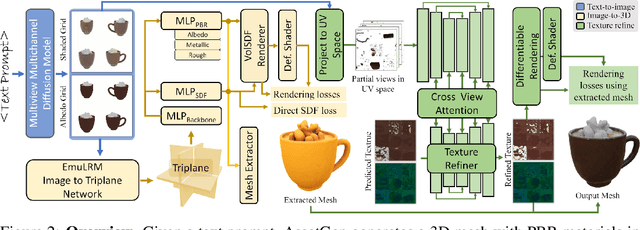

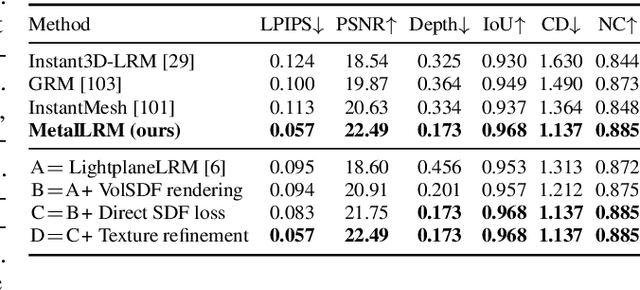
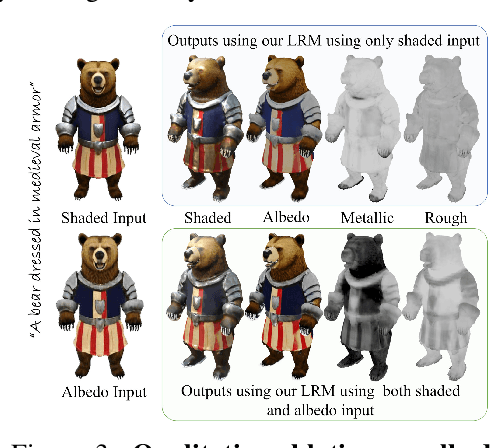
Abstract:We present Meta 3D AssetGen (AssetGen), a significant advancement in text-to-3D generation which produces faithful, high-quality meshes with texture and material control. Compared to works that bake shading in the 3D object's appearance, AssetGen outputs physically-based rendering (PBR) materials, supporting realistic relighting. AssetGen generates first several views of the object with factored shaded and albedo appearance channels, and then reconstructs colours, metalness and roughness in 3D, using a deferred shading loss for efficient supervision. It also uses a sign-distance function to represent 3D shape more reliably and introduces a corresponding loss for direct shape supervision. This is implemented using fused kernels for high memory efficiency. After mesh extraction, a texture refinement transformer operating in UV space significantly improves sharpness and details. AssetGen achieves 17% improvement in Chamfer Distance and 40% in LPIPS over the best concurrent work for few-view reconstruction, and a human preference of 72% over the best industry competitors of comparable speed, including those that support PBR. Project page with generated assets: https://assetgen.github.io
Meta 3D Gen
Jul 02, 2024



Abstract:We introduce Meta 3D Gen (3DGen), a new state-of-the-art, fast pipeline for text-to-3D asset generation. 3DGen offers 3D asset creation with high prompt fidelity and high-quality 3D shapes and textures in under a minute. It supports physically-based rendering (PBR), necessary for 3D asset relighting in real-world applications. Additionally, 3DGen supports generative retexturing of previously generated (or artist-created) 3D shapes using additional textual inputs provided by the user. 3DGen integrates key technical components, Meta 3D AssetGen and Meta 3D TextureGen, that we developed for text-to-3D and text-to-texture generation, respectively. By combining their strengths, 3DGen represents 3D objects simultaneously in three ways: in view space, in volumetric space, and in UV (or texture) space. The integration of these two techniques achieves a win rate of 68% with respect to the single-stage model. We compare 3DGen to numerous industry baselines, and show that it outperforms them in terms of prompt fidelity and visual quality for complex textual prompts, while being significantly faster.
OMNIA Faster R-CNN: Detection in the wild through dataset merging and soft distillation
Dec 06, 2018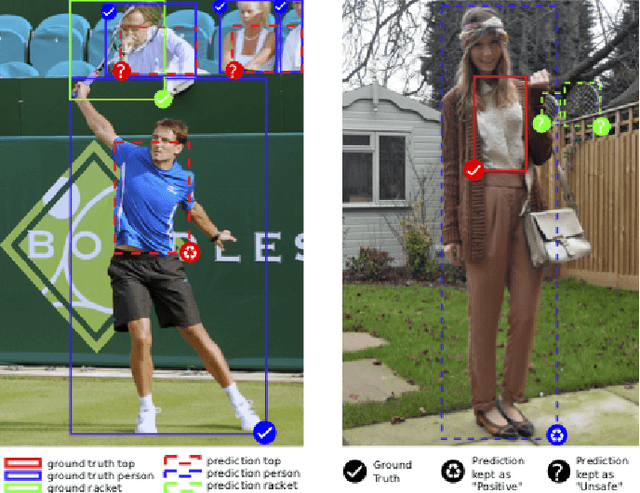

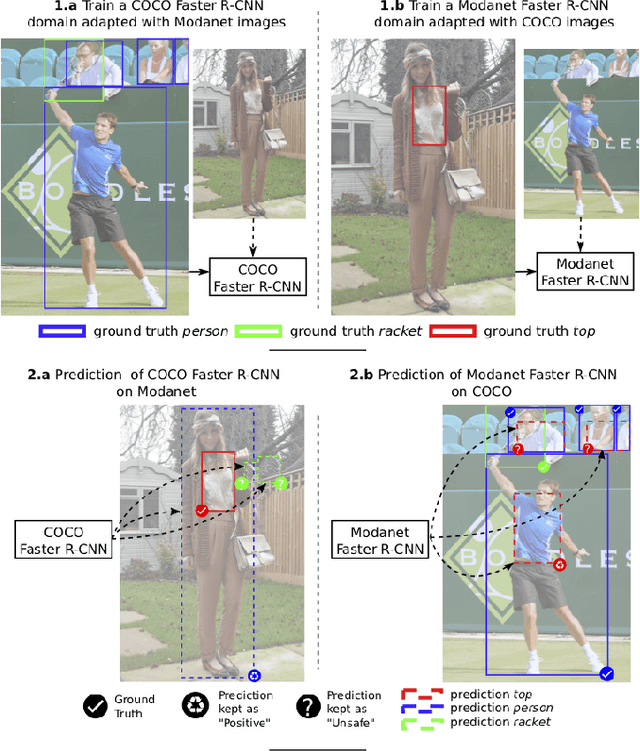

Abstract:Object detectors tend to perform poorly in new or open domains, and require exhaustive yet costly annotations from fully labeled datasets. We aim at benefiting from several datasets with different categories but without additional labelling, not only to increase the number of categories detected, but also to take advantage from transfer learning and to enhance domain independence. Our dataset merging procedure starts with training several initial Faster R-CNN on the different datasets while considering the complementary datasets' images for domain adaptation. Similarly to self-training methods, the predictions of these initial detectors mitigate the missing annotations on the complementary datasets. The final OMNIA Faster R-CNN is trained with all categories on the union of the datasets enriched by predictions. The joint training handles unsafe targets with a new classification loss called SoftSig in a softly supervised way. Experimental results show that in the case of fashion detection for images in the wild, merging Modanet with COCO increases the final performance from 45.5% to 57.4%. Applying our soft distillation to the task of detection with domain shift on Cityscapes enables to beat the state-of-the-art by 5.3 points. We hope that our methodology could unlock object detection for real-world applications without immense datasets.
 Add to Chrome
Add to Chrome Add to Firefox
Add to Firefox Add to Edge
Add to Edge